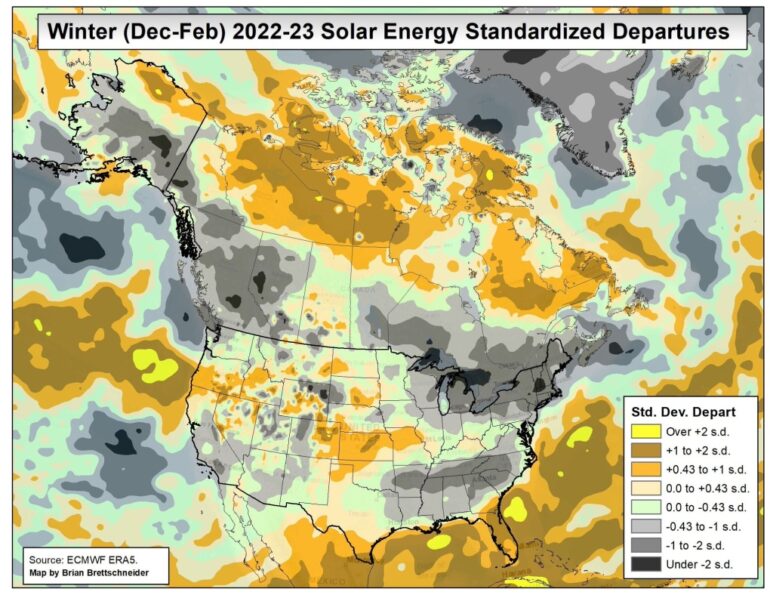According to solar energy data collected by The European Centre for Medium Range Forecasting (ECMRF,) Ontario saw some of its lowest solar energy levels in history between December 2022 and February 2023.
“It doesn’t surprise me,” said Environment Canada Climatologist David Phillips when asked about the unusually gloomy winter across Ontario in an interview with Humber news on Thursday.
“Observationally and collectively, it was one of the most mild, overcast winters we’ve ever had. In fact it was the warmest winter in Ontario in 76 years,” he said.
“So, I wasn’t surprised because climate changes and there were indications it would be a mild winter- but this turnout was truly unprecedented and we’ve never really seen something like this,” he added.
According to Phillips’ data, rather than typical Arctic air systems passing through Ontario, the province received American air systems that brought a much more overcast climate this winter.
Because of that, the ice covering the great lakes were at its lowest levels in history, causing the open water that leaves the lakes to condense in the air more frequently- which ends up blocking out the sun.

Climatologist with the Alaska Region of the United States National Weather Service, Brian Brettschneider formed a map showing the dark spots that represent mild/overcast weather across Ontario this winter Photo credit: CTV news & Brian Brettschneider
Climatologist with the Alaska Region of the United States National Weather Service, Brian Brettschneider, formed a map showing the dark spots that represent mild/overcast weather across Ontario this winter
“By the end of February, usually 40 per-cent of the lakes are covered by ice. However, this winter only 7 per-cent of the lakes were covered,” said Phillips.
He said the lack of sun could potentially affect the lakes going forward. Lower ice levels can bring on spring storms that may erode shorelines with no ice to protect them.
Beyond the surface, the sun making minimal appearances can also bring on seasonal adjustment disorder, where the weather and lack of sun not only dims the sky, but people’s lives as well.
“We may not be having as cold of a winter, and that’s the plus side, but the sun makes everything brighter, including psychologically,” said Phillips.
Phillips said SAD commonly affects 15 to 30 per-cent of Canadians. He expects the number to have jumped significantly this winter after he recorded just 18 of 90 ‘clear days’ from December 1st to the end of February, far less than usual.
“The sun was truly MIA this year, it was kind of like we were Vancouver on the east,” said Phillips.
“We all like balance but i’ll tell you, the weather we’re cursing now could be the weather we wish for in the future because would you rather have bright and sunny but really cold, or gloomy and dark, but you don’t have to layer up as much.”
When asked if this is a concern or if this is something that can be corrected, Phillips said it’s uncertain to determine whether this is a one-off or if it really is a sign of things to come throughout Ontario winters going forward.
“But it’s always best to let nature run its course because it is bigger than us and really can’t be controlled or contained,” he finished with.
Phillips provided additional insight into the rare and gloomy Ontario winter:
- 79 of 120 days observed from November to march featured precipitation
- There was 31 per cent more snow this winter than normal (milder climates cause more snow, where colder provinces such as Manitoba or Saskatchewan don’t get as much because the air is too cold to produce snow.)
- 11 days this winter were -10 or lower, compared to 38 days last winter

